Phase-Shift Laser Ranging Technology Based on Multi-Frequency Carrier Phase Modulation
Abstract
1. Introduction
2. Methods
3. Results
3.1. Simulation Analysis
3.2. Experimental Devices
3.3. Results and Discussions
4. Discussion and Conclusions
Author Contributions
Funding
Institutional Review Board Statement
Informed Consent Statement
Data Availability Statement
Conflicts of Interest
References
- Jiang, C.; Yang, J.; Zhang, L.; Wang, X. High-precision phase-shift laser range finder system based on laser beat-frequency. Acta Photonica Sin. 2014, 43, 912006. [Google Scholar] [CrossRef]
- Ran, Y.; Gaofei, Z.; Zichen, Z.; Zheng, Y. Design and experiment of a laser ranging scheme for aerospace applications. Infrared Laser Eng. 2014, 43, 700–706. [Google Scholar]
- Song, H.; Zhang, Y.; Wu, C.; Yichun, S.; Wu, C.; Guo, Y.; Huang, H.; Si, Y.; Yang, P.; Quan, X. Calibration method 191 of underwater phase laser ranging. Infrared Laser Eng. 2019, 48, 406008. [Google Scholar] [CrossRef]
- Yoon, H.; Hong, J.; Kim, H.; Park, K. A characteristic analysis of the laser range finder with various modulation frequencies. In Proceedings of the 2008 International Conference on Control, Automation and Systems, Seoul, Korea, 14–17 October 2008; pp. 2280–2283. [Google Scholar] [CrossRef]
- He, H.; Sun, J.; Lu, Z.; Xu, M.; Lao, C.; Han, R.; Cai, X.; Li, Y. Phase-shift laser range finder technique based on optical carrier phase modulation. Appl. Opt. 2020, 59, 5079–5085. [Google Scholar] [CrossRef] [PubMed]
- He, H.; Sun, J.; Lu, z.; Cong, H.; Han, R.; Ren, W.; Zhang, L.; Li, C.; Jiang, Y. Outdoor Experiments of Phase-Shift Laser Range Finder Technique Based on Optical Carrier Phase Modulation. Chin. J. Lasers 2021, 48, 2404001. [Google Scholar] [CrossRef]
- Zhen, D.; Chen, W.; Chen, L. A laser ranging method with high precision and large range in high speed based on phase measurement. J. Optoelectron. Laser 2015, 2, 303–308. [Google Scholar] [CrossRef]
- Liu, X.; Wang, L.; Tang, X.; Li, S.; Ma, C.; Yang, Y.; Jiang, X.; Huang, C.; Wang, X.; Pan, S. Optical Transfer Delay Measurement Based on Multi-frequency Phase-Derived Ranging. In Proceedings of the 2021 19th International Conference on Optical Communications and Networks (ICOCN), Qufu, China, 23–27 August 2021; pp. 1–6. [Google Scholar] [CrossRef]
- Yoon, H.; Hong, J.; Kang, S.; Park, K. A multiple phase demodulation method for high resolution of the laser range finder. In Proceedings of the 2008 3rd International Conference on Sensing Technology, Taipei, Taiwan, 30 November–3 December 2008; pp. 324–328. [Google Scholar] [CrossRef]
- Den Boef, A.J. Two-wavelength scanning spot interferometer using single-frequency diode lasers. Appl. Opt. 1988, 27, 306–311. [Google Scholar] [CrossRef] [PubMed]
- Williams, C.C.; Wickramasinghe, H.K. Optical ranging by wavelength multiplexed interferometry. J. Appl. Phys. 1986, 60, 1900–1903. [Google Scholar] [CrossRef]
- Xu, B.J.; Li, G.; Huangfu, K. Ambiguity problem of digitized multiple frequency CW ranging radar under noisy condition. Acta Electonica Sin. 2002, 30, 903. [Google Scholar]
- Jia, F.; Ding, Z.; Yuan, F.; Ge, D. Real-time laser range finding system for moving target based on all-phase fourier transfrorm spectrum analysis. Acta Opt. Sin. 2010, 30, 2928–2934. [Google Scholar] [CrossRef]
- Zhang, S.; Chen, H.; Gong, G.; Shi, J.; Nei, H.; Wang, Y.; Bu, X. Research on Phase Difference Laser Ranging System. In Proceedings of the 2018 2nd IEEE Advanced Information Management, Communicates, Electronic and Automation Control Conference (IMCEC), Xi’an, China, 25–27 May 2018; pp. 1776–1782. [Google Scholar] [CrossRef]
- Le, Y.; Xu, X.; Li, Z.; Zhao, Y.; Xu, F. Resolution method of laser ranging ambiguity based on overdetermined equations. Chin. J. Sci. Instrum. 2012, 33, 930–935. [Google Scholar] [CrossRef]
- Yuan, Q.P.; Fan, L.J.; Tong, Z.R. Research on Tri-Frequency Phase Ranging Method. Mech. Electron. Eng. III 2012, 130, 2957–2960. [Google Scholar] [CrossRef]
- Jurna, M.; Korterik, J.; Otto, C.; Offerhaus, H. Shot noise limited heterodyne detection of CARS signals. Opt. Express 2007, 15, 15207–15213. [Google Scholar] [CrossRef] [PubMed]
- McManamon, P. Review of ladar: A historic, yet emerging, sensor technology with rich phenomenology. Opt. Eng. 2012, 51, 060901. [Google Scholar] [CrossRef]
- Lyons, R. Digital Envelope Detection: The Good, the Bad, and the Ugly [Tips and Tricks]. IEEE Signal Process. Mag. 2017, 34, 183–187. [Google Scholar] [CrossRef]
- Liu, Y.Z.; Zhao, B. Phase-shift correlation method for accurate phase difference estimation in range finder. Appl. Opt. 2015, 54, 3470–3477. [Google Scholar] [CrossRef] [PubMed]
- Karlsson, C.J.; Olsson, F.Å.A.; Letalick, D.; Harris, M. All-fiber multifunction continuous-wave coherent laser radar at 1.55 µm for range, speed, vibration, and wind measurements. Appl. Opt. 2000, 39, 3716–3726. [Google Scholar] [CrossRef] [PubMed]
- Yang, F.; He, Y.; Shang, J.; Chen, W. Development of an all-fiber heterodyne lidar for range and velocity measurements. Chin. Opt. Lett. 2010, 8, 713–716. [Google Scholar] [CrossRef][Green Version]
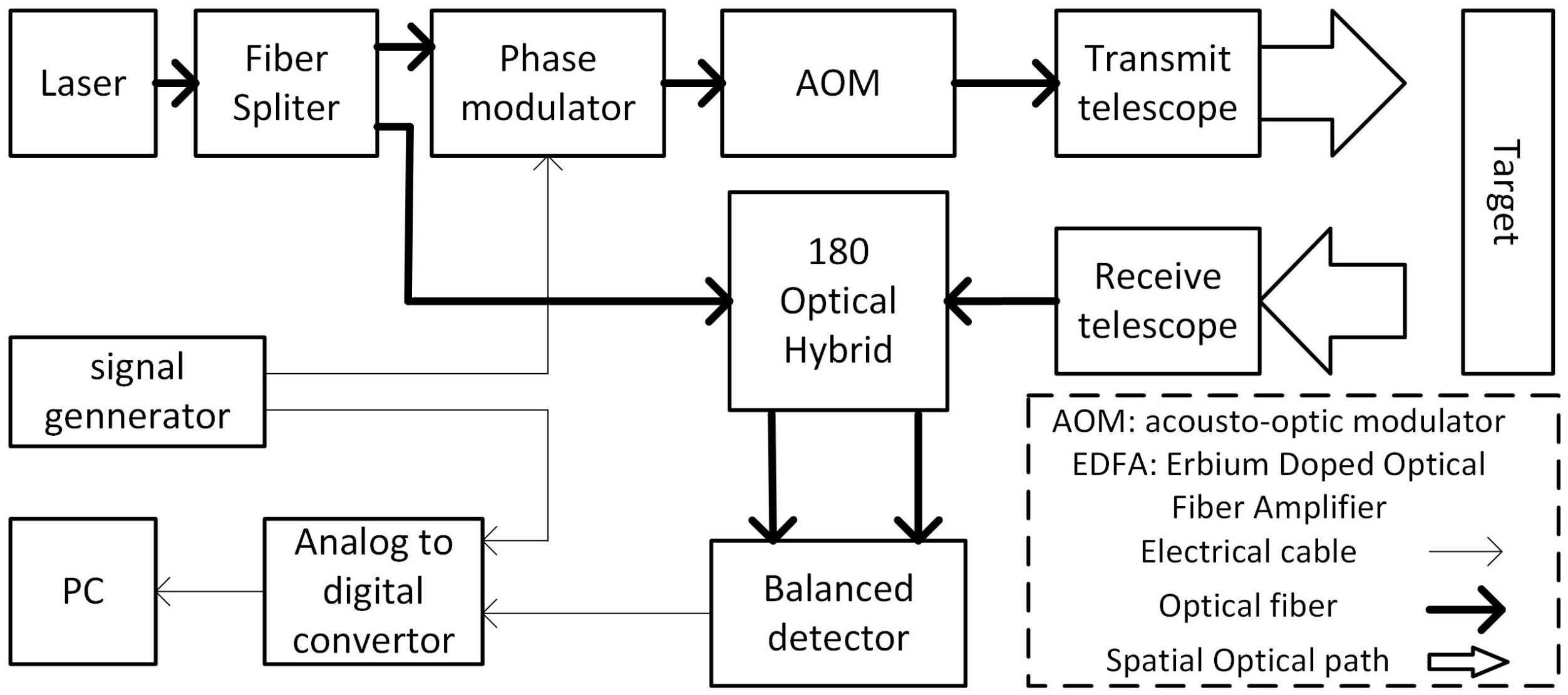
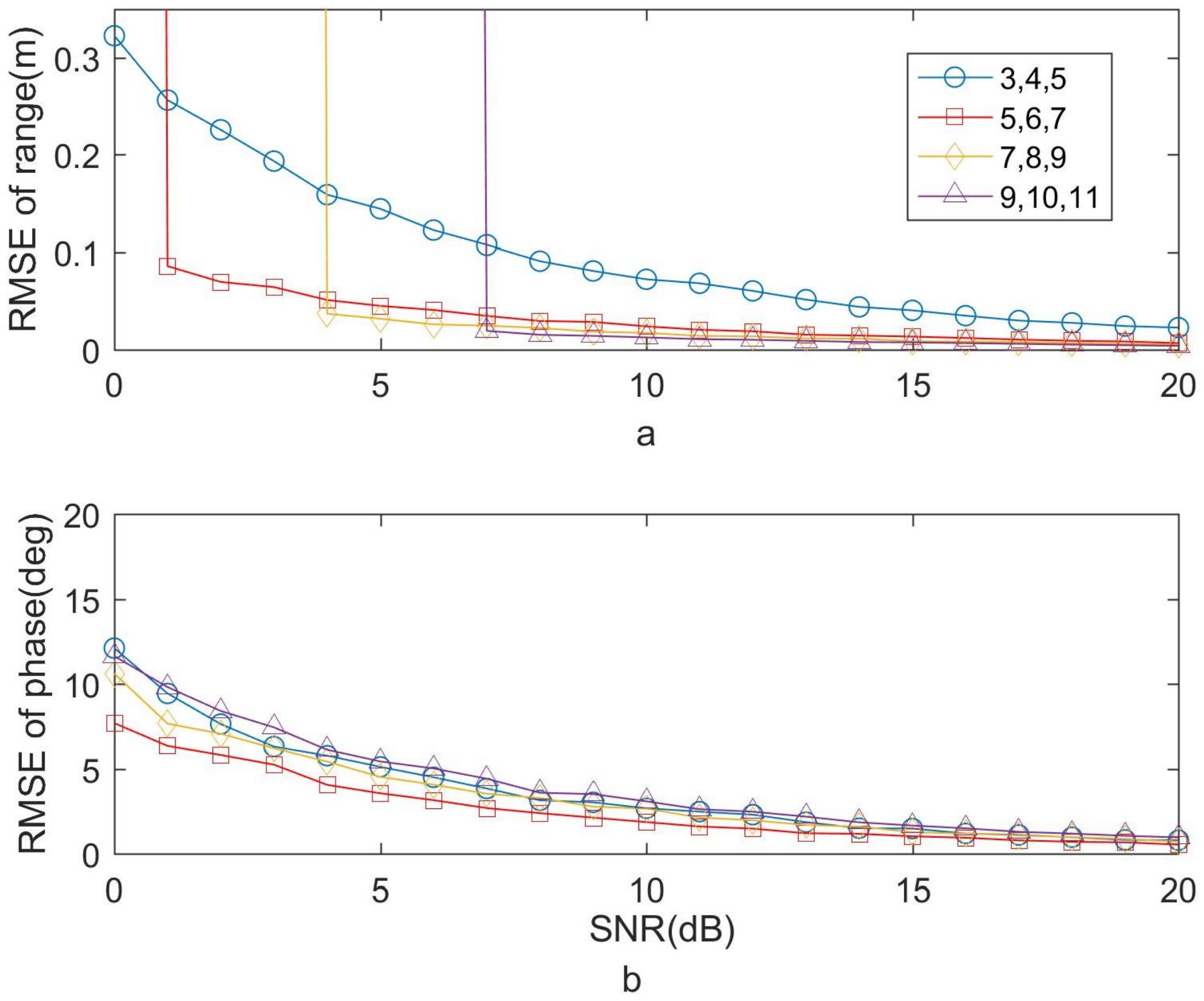

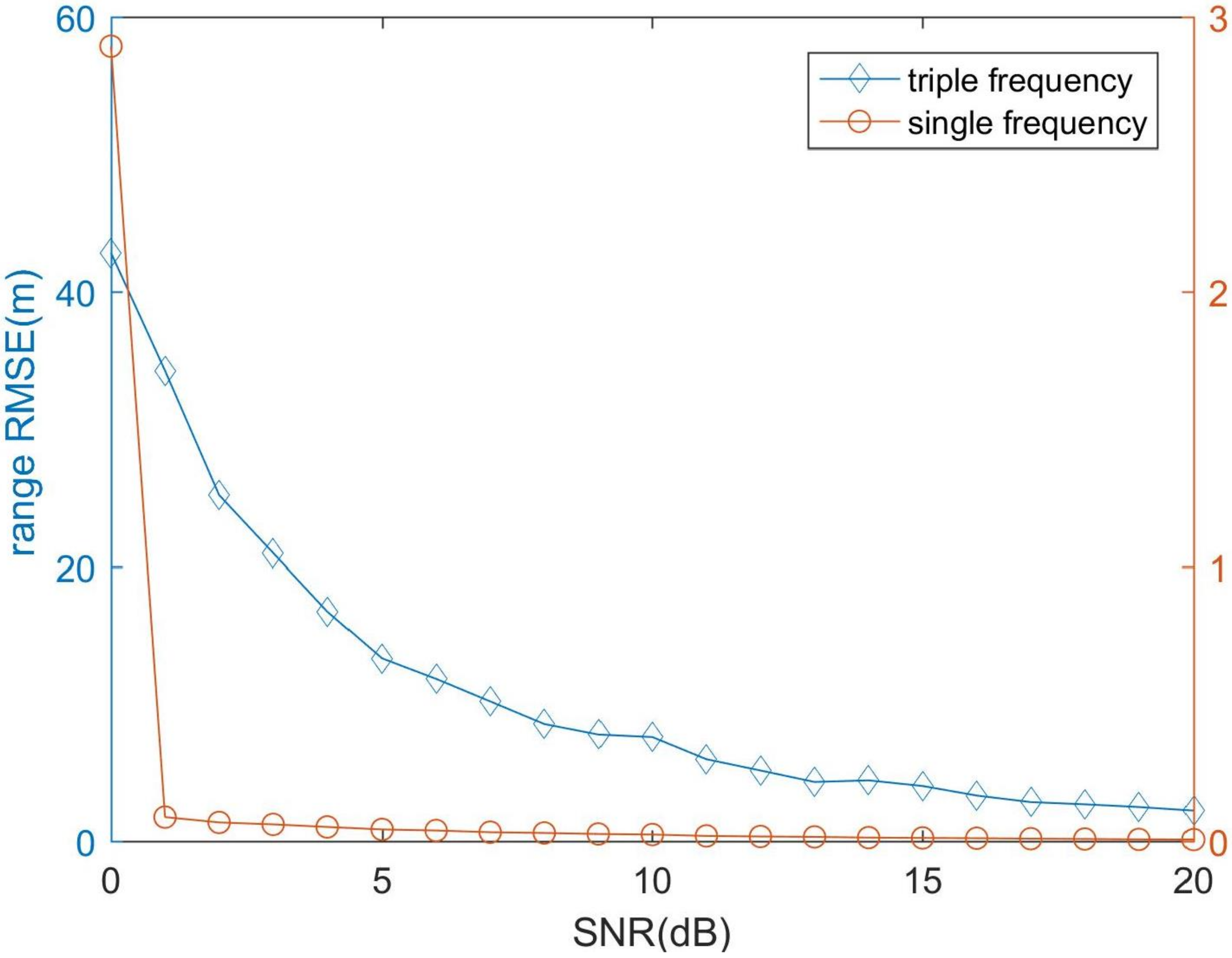
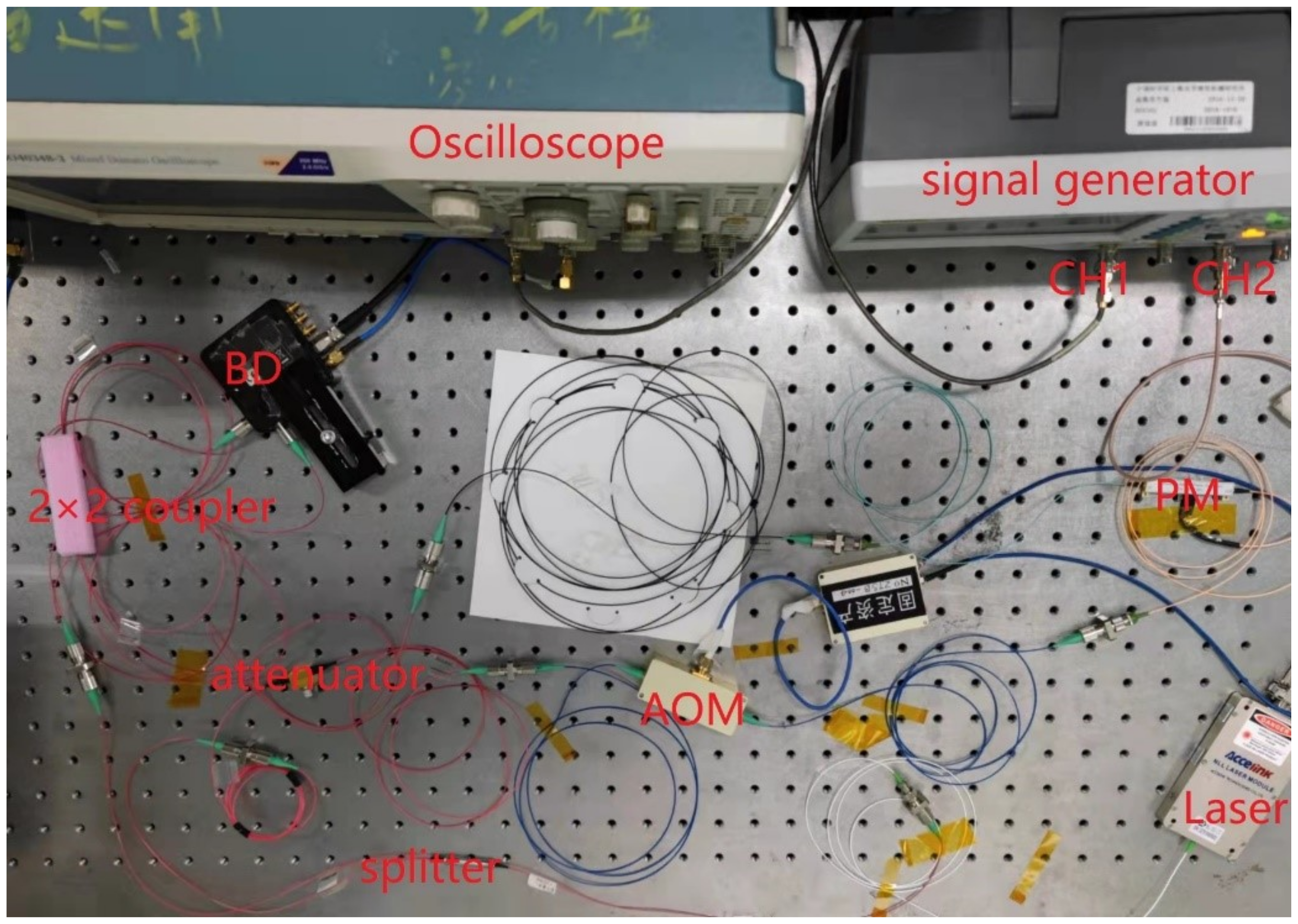
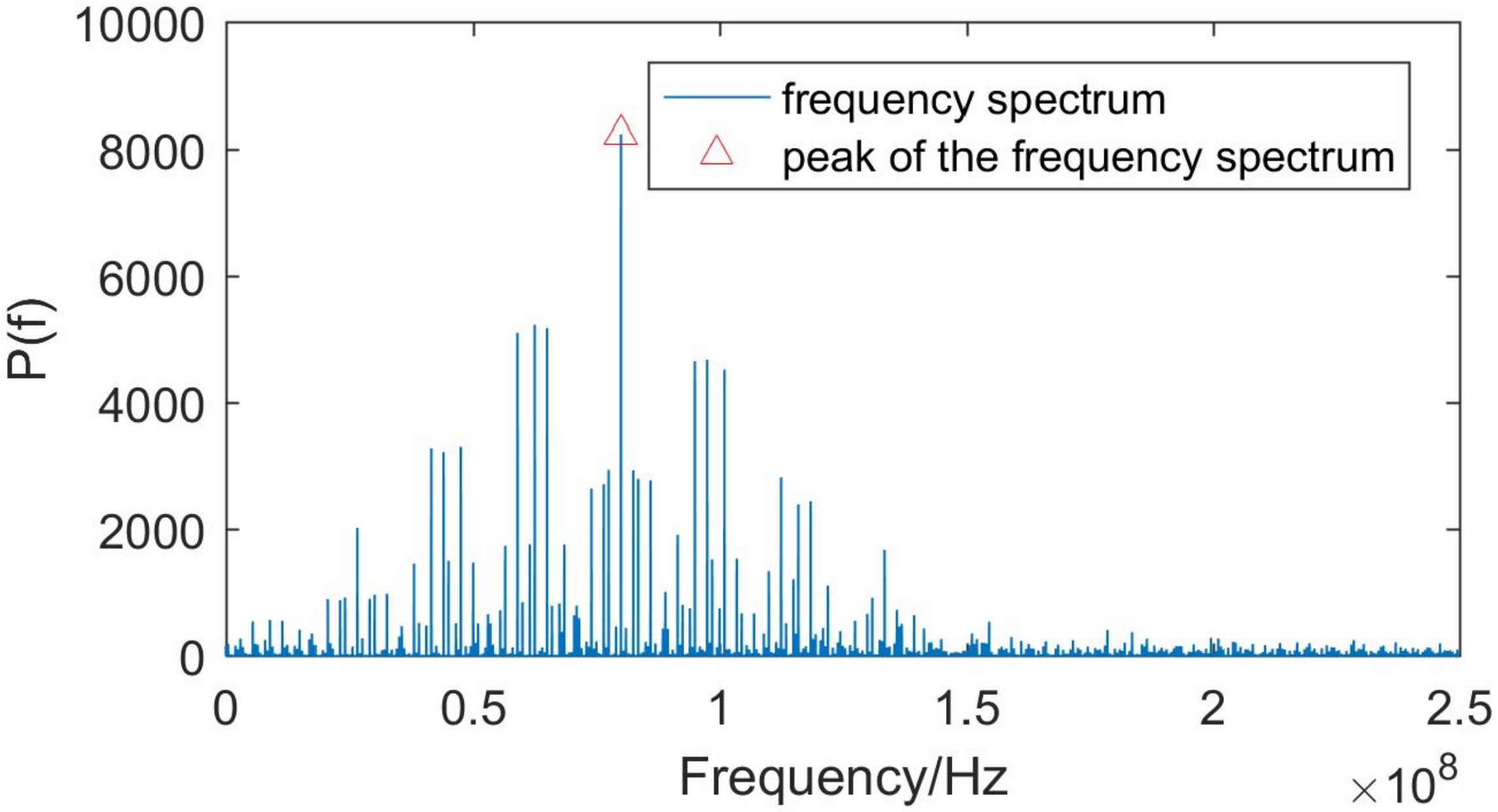
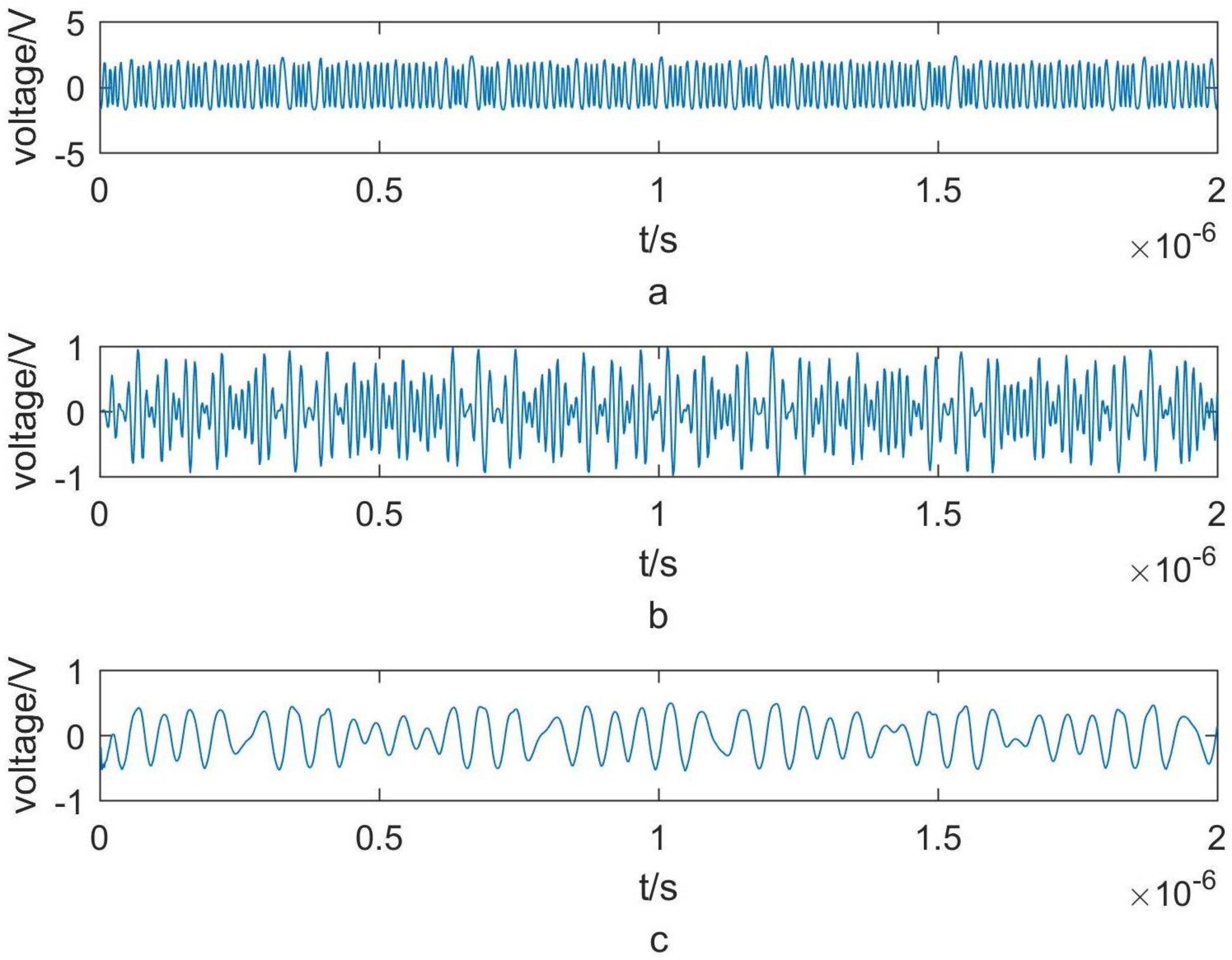
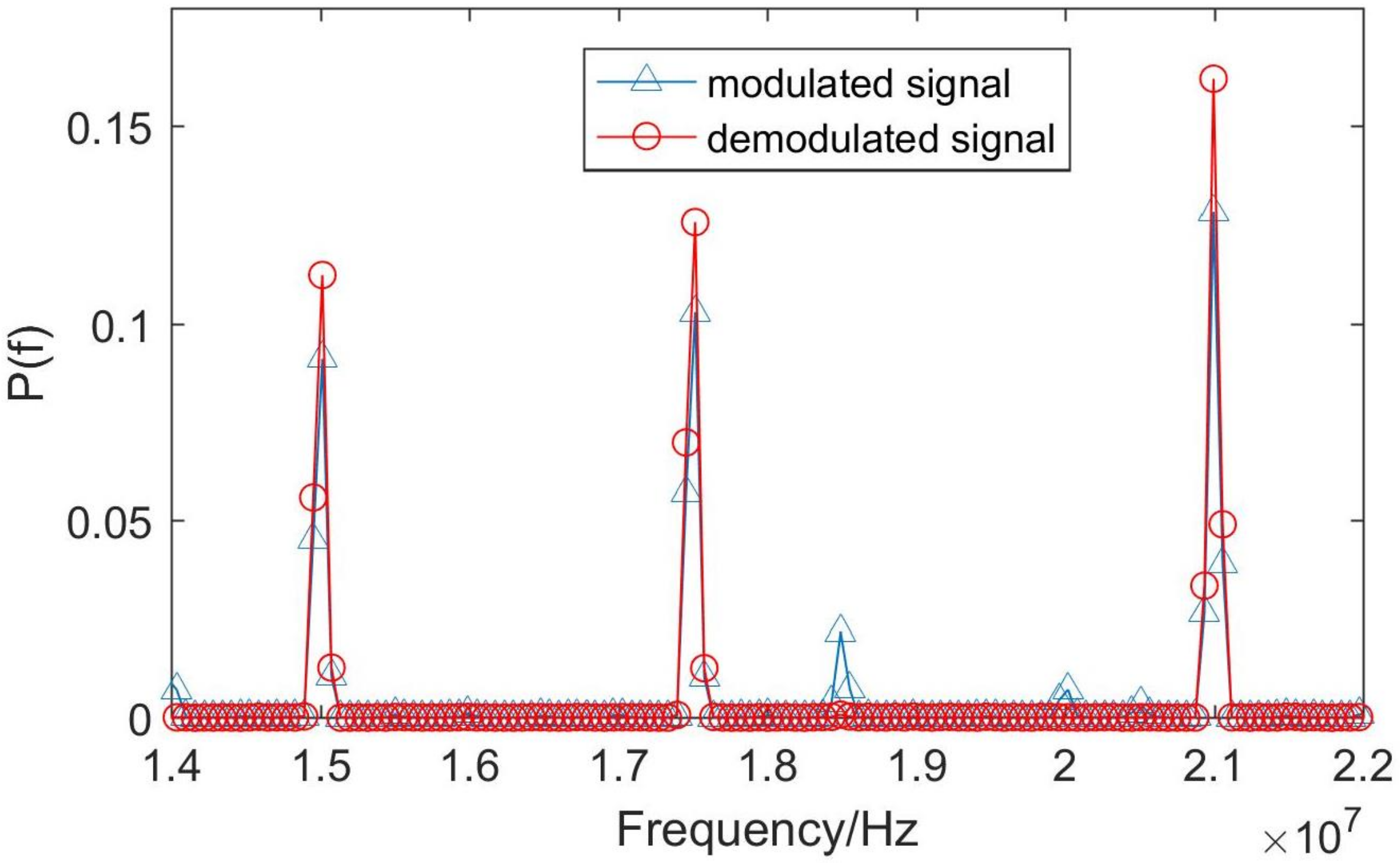
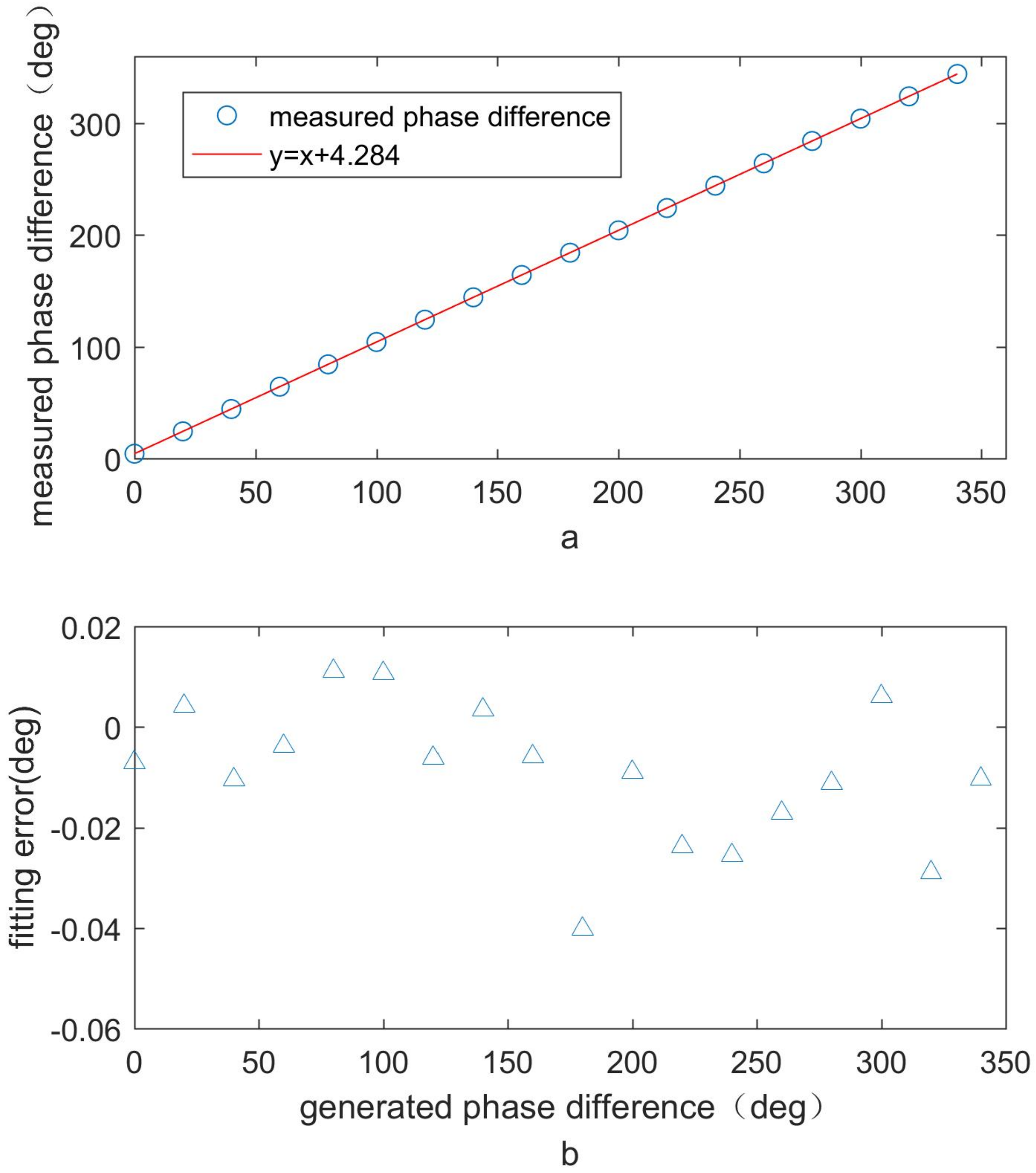

| Generated Phase Difference () | Measured Distance (m) | Measured Phase Difference () |
|---|---|---|
| 0 | 3.564 | 4.277 |
| 20 | 20.240 | 24.288 |
| 40 | 36.895 | 44.273 |
| 60 | 53.567 | 64.280 |
| 80 | 70.246 | 84.295 |
| 100 | 86.912 | 104.295 |
| 120 | 103.565 | 124.278 |
| 140 | 120.240 | 144.287 |
| 160 | 136.898 | 164.278 |
| 180 | 153.537 | 184.244 |
| 200 | 170.229 | 204.275 |
| 220 | 186.883 | 224.260 |
| 240 | 203.549 | 244.258 |
| 260 | 220.222 | 264.267 |
| 280 | 236.894 | 284.273 |
| 300 | 253.575 | 304.290 |
| 320 | 270.213 | 324.255 |
| 340 | 286.895 | 344.274 |
| Attenuation (dB) | Optical Power (dBm) | SNR (dB) | Ranging Precision (m) |
|---|---|---|---|
| 10 | −50 | 23 | 0.0061 |
| 11 | −51 | 22 | 0.0073 |
| 12 | −52 | 21 | 0.0091 |
| 13 | −53 | 20 | 0.0105 |
| 14 | −54 | 19 | 0.0096 |
| 15 | −55 | 18 | 0.0108 |
| 16 | −56 | 17 | 0.0134 |
| 17 | −57 | 16 | 0.0138 |
| 18 | −58 | 15 | 0.0135 |
| 19 | −59 | 14 | 0.0155 |
| 20 | −60 | 13 | 0.0190 |
| 21 | −61 | 12 | 0.0177 |
| 22 | −62 | 11 | 0.0220 |
| 23 | −63 | 10 | 0.0282 |
| 24 | −64 | 9 | 0.0236 |
| 25 | −65 | 8 | 0.0323 |
| 26 | −66 | 7 | 0.0380 |
| 27 | −67 | 6 | 0.0513 |
| 28 | −68 | 5 | 0.0501 |
| 29 | −69 | 4 | 0.0568 |
| 30 | −70 | 3 | 0.0635 |
| 31 | −71 | 2 | 0.0619 |
| 32 | −72 | 1 | 0.0930 |
| 33 | −73 | 0 | 22.0784 |
Publisher’s Note: MDPI stays neutral with regard to jurisdictional claims in published maps and institutional affiliations. |
© 2022 by the authors. Licensee MDPI, Basel, Switzerland. This article is an open access article distributed under the terms and conditions of the Creative Commons Attribution (CC BY) license (https://creativecommons.org/licenses/by/4.0/).
Share and Cite
Zhou, L.; He, H.; Sun, J.; Lin, B. Phase-Shift Laser Ranging Technology Based on Multi-Frequency Carrier Phase Modulation. Photonics 2022, 9, 603. https://doi.org/10.3390/photonics9090603
Zhou L, He H, Sun J, Lin B. Phase-Shift Laser Ranging Technology Based on Multi-Frequency Carrier Phase Modulation. Photonics. 2022; 9(9):603. https://doi.org/10.3390/photonics9090603
Chicago/Turabian StyleZhou, Lisha, Hongyu He, Jianfeng Sun, and Baojun Lin. 2022. "Phase-Shift Laser Ranging Technology Based on Multi-Frequency Carrier Phase Modulation" Photonics 9, no. 9: 603. https://doi.org/10.3390/photonics9090603
APA StyleZhou, L., He, H., Sun, J., & Lin, B. (2022). Phase-Shift Laser Ranging Technology Based on Multi-Frequency Carrier Phase Modulation. Photonics, 9(9), 603. https://doi.org/10.3390/photonics9090603





